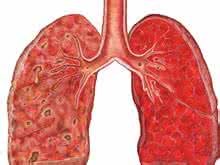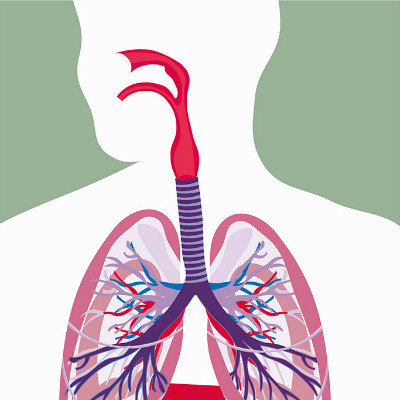Pneumonia dissolves dissipates the stage symptom?
summary
In our impression, patients with pneumonia (especially community-acquired pneumonia) should have fever, cough, expectoration, elevated WBC / N, obvious changes in chest X-ray, etc. the diagnosis is easy, but in the last article, we introduced that the diagnosis of pneumonia has exclusion criteria, so we can no longer take the diagnosis of pneumonia lightly. Here we summarize some details of pneumonia that are easy to ignore clinically.
Pneumonia dissolves dissipates the stage symptom?
1. Gastroenteritis or pneumonia suppose a 90 year old man came to the hospital because of "nausea and diarrhea for three days". After a simple physical examination, he was admitted to the Department of Gastroenterology. After symptomatic treatment, his gastrointestinal symptoms improved significantly. On the third day, he began to cough, expectoration and shortness of breath. Chest X-ray showed pneumonia, Arterial blood gas showed hypoxemia (mild), so it was diagnosed as "pneumonia". At this time, there is a question to be clear. Is the patient's nausea and diarrhea caused by "acute gastroenteritis" or pneumonia at the beginning, but only manifested as atypical gastrointestinal symptoms? If it is the former, then the pneumonia after admission is hospital acquired pneumonia (HAP). If it is the latter, it is community acquired pneumonia (CAP). In view of the different etiology between HAP and cap, it is of great significance to distinguish them, although the same antibiotic (such as third-generation cephalosporin) may be used in clinic. In fact, such examples are common among the elderly. If the patient is cap at the beginning, and we treat it according to gastroenteritis without timely antibiotics, the result may be fatal. In particular, the patient had no fever, no moist rales could be heard in the lung during physical examination, the WBC / N showed no obvious abnormality in blood routine, and the chest X-ray was not done due to negligence (imagine that you would give chest X-ray examination to a patient with digestive tract symptoms and no respiratory tract symptoms?), Making the right diagnosis is not so easy.

2. Is the blood picture of pneumonia patients high? In many cases of senile pneumonia, or severe pneumonia, the WBC / N in the blood routine is not significantly increased, but normal or even decreased, which is not only a sign of mild infection, but also one of the signs of severe disease. It's not someone's experience, it's collective wisdom. Because textbooks and guidelines have detailed instructions: one of the diagnostic criteria for cap is that peripheral blood leukocytes > 10x109 / L or < 4x109 / L, with or without left shift of nucleus. The decrease of WBC / N may be due to infection induced myelosuppression. Therefore, the blood picture (such a name is not standardized) is not high, is not to rule out the element of pneumonia. In fact, the change of hemogram is never a necessary item in the diagnosis of cap. As shown in the table below, it is necessary to comply with 1 and 3 in the diagnosis of cap, while only any one (including clinical symptoms, signs and Hemogram) in Article 2 is required to comply, so the Hemogram of CAP patients can be normal and decreased. In addition, the patient can have no fever.

3. When to reexamine the chest film after pneumonia treatment? The majority of CAP patients had improved clinical symptoms 72 hours after definite diagnosis and initial treatment. No fever, cough and expectoration symptoms were relieved. The reexamination of blood routine showed that WBC / N decreased significantly or returned to normal. Everyone was very happy. At this time, someone asked whether to reexamine a chest X-ray. OK, check it. The next day, the chest X-ray results showed that the exudation shadow of both lungs increased, What's going on. Some people read "internal medicine", ah, the book clearly says "the clinical manifestations of CAP patients have improved after treatment, but the X-ray image absorption of lesions is late". If we turn to pathology again, we will know that typical bacterial pneumonia has four natural stages: hyperemia and edema stage (chest film shows patchy distribution of fuzzy shadows), red hepatoid stage (chest film shows large dense shadows), gray hepatoid stage, dissolution and dissipation stage (chest film returns to normal), However, we have started anti infection treatment in the early stage of pneumonia, which interferes with the natural course of the disease, so it is difficult to see the typical four stage pathological process. Even so, this may still explain why the clinical manifestations have improved while the chest X-ray is still in progress. Therefore, the 2016 edition of cap guidelines pointed out that most CAP patients' clinical symptoms improved 72 hours after the initial treatment, while the imaging improvement lagged behind the clinical symptoms. For patients with obvious improvement of clinical symptoms, it is not recommended to review the chest image routinely. Only when the clinical manifestations persist or worsen, the chest film or chest CT should be reviewed to determine the changes of lung lesions. In fact, whether the condition of CAP patients is improved or not depends on clinical rather than imaging changes.

matters needing attention
In the course of cap, we may not hear the moist rales in the lung. In addition, we did not have moist rales at the beginning of treatment. After a period of treatment, our condition improved, but we had moist rales (dissolution and dissipation). This is reasonable, not abnormal.















